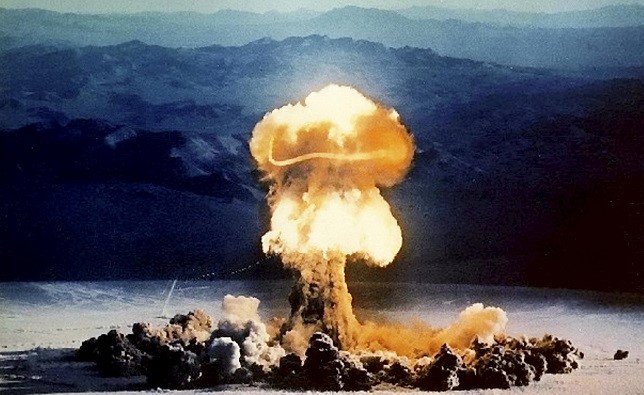Even a limited nuclear war could have dangerous effects far beyond the region that is fatally hit. It would result in global cooling that substantially reduces agricultural production in the world’s main breadbasket regions, from the US, to Europe, Russia, and China.

The effect on food security worldwide including trade responses has now for the first time been revealed by an international team of scientists in a study based on advanced computer simulations.
The sudden temperature reduction would lead to a food system shock unprecedented in documented history. It would not undo long-term climate change from fossil fuels use, though – after about a decade of cooling, global warming would surge again.
“We now know that nuclear conflict would not just be a terrible tragedy in the region where it happens – it is also an underestimated risk for global food security,” says Jonas Jägermeyr at the Potsdam Institute for Climate Impact Research, the NASA Goddard Institute for Space Studies, and the University of Chicago; lead-author of the study now published in the Proceedings of the US National Academy of Sciences.
“We find severe losses in agricultural production, but importantly we also evaluate trade repercussions affecting local food availability. It turns out that major breadbasket regions would cut exports leaving countries worldwide short of supplies. A regional crisis would become global, because we all depend on the same climate system,” adds Jägermeyr.
Soot from fires ignited by the bombs would partially block sunlight
As an example, for a regional conflict, the scientists studied the implications of a limited nuclear war between India and Pakistan using less than 1 percent of the worldwide nuclear arsenal. Fires ignited by the bombs would send large amounts of soot high up into the atmosphere where winds would rapidly distribute it around the globe. These particles would partially block sunlight from reaching Earth’s surface, causing sudden cooling and changing weather patterns.
For the injection of 5 million tons of smoke, climate models calculated global mean temperature drops of about 1.8 Celsius degrees (3.2 Fahrenheit degrees) and precipitation declines of 8 percent for at least five years – pushing Earth into a state substantially colder and drier. To put this into context, so far greenhouse gases from fossil fuels have warmed our planet by roughly 1 degree Celsius. Before this study, however, there has been very little understanding of how global agricultural systems would respond to cooling.
In the first year after the war, domestic reserves and global trade could largely buffer the food production loss, the researchers now show. By year four, grain stocks would virtually be depleted, and the international trade systems would come to a halt. Continuing production losses therefore propagate from the breadbasket regions in the Northern Hemisphere to the often-poorer populations of the Global South. Maize and wheat availability would shrink by at least 20 percent in more than 70 countries with about 1.3 billion people. “This is a surprisingly sharp response in view of the much larger conflict scenarios imaginable when it comes to nuclear war,” says Jägermeyr.
“More people could die outside the target areas due to famine”
“As horrible as the direct effects of nuclear weapons would be, more people could die outside the target areas due to famine, simply because of indirect climatic effects,” says co-author Alan Robock at Rutgers University. “Nuclear proliferation continues, and there is a de facto nuclear arms race in South Asia. Investigating the global impacts of a nuclear war is therefore – unfortunately – not at all a Cold War issue.”
The authors exclude India and Pakistan from their analyses, in order to avoid arbitrary assumptions when mixing up the direct and indirect effects of war. Under the assumption that food production in the two countries would drop essentially to zero, indirect global food shortages would be even worse. While the two countries’ nuclear arsenals continue to grow both in number and weapon size, this study used the lower end of potential soot emission estimates.
“We ran an ensemble of six leading AgMIP global crop models for this study, and they all agree to a great deal on the signal. This shows how robust the simulations are,” says co-author Cynthia Rosenzweig at the NASA Goddard Institute for Space Studies.
“Comparing different computer simulation models reduces uncertainties. Today, we can say with confidence that such a regional nuclear war would have adverse consequences for global food security for about a decade, unmatched in modern history,” adds Rosenzweig, a veteran pioneer of breakthrough agricultural model intercomparisons (AgMIP) which today are one important part of the larger Impacts Model Intercomparison Project (ISIMIP) coordinated by the Potsdam Institute.
